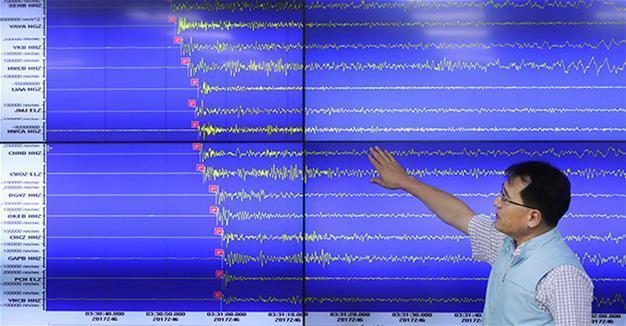Turkish professor, top exam body revisit row over ‘manmade quakes’ after North Korea H-Bomb test
Volkan Şahin – ISTANBUL

AP photo
A new front has been opened in a controversial debate between meteorology expert Professor Mikdat Kadıoğlu and the country’s top exam body, the Student Selection and Placement Center (ÖSYM), over the possibility of “manmade earthquakes” after North Korea’s sixth and largest nuclear test, claimed to have detonated a “hydrogen bomb” on Sept. 3.Kadıoğlu had a dispute with the ÖSYM to be settled in court when he appealed a question on last year’s University Entrance Examination (YGS), which claimed that earthquakes cannot be manmade.
Following the reports of an earthquake after the reclusive state’s nuclear test, Kadıoğlu took to social media to reawaken the issue once again.
“Hey, ÖSYM! Well [you claimed] there cannot be an earthquake caused by man. The fact that you sue me will not legitimize wrong questions and those who blindly defend them,” he tweeted.
The row was about the 27th question on a social sciences test on March 13, 2016 which asked, “I. Floods, II. Earthquakes III. Avalanches IV. Volcanic explosions – Which of the natural disasters mentioned above can have had direct or indirect influence by man?” The ÖSYM put the right answer as “I and III.”
Kadıoğlu had earlier stated that the question was wrong and it had multiple right answers in the options.
“There are ‘earthquakes’ among the options and there is more than one right answer because the person who prepared the question disregarded peoples’ influence on earthquakes. The issue has been looked from a very narrow perspective,” he had stated.
“Bomb tests, drawdowns and nuclear tests also cause earthquakes. There is man’s influence on those factors,” he added.
Pyongyang said the device it detonated on Sept. 3 was a hydrogen bomb - far more powerful than the fission-based devices it is believed to have previously tested - and small enough to fit into a missile.
The United States Geological Survey (USGS) reported a first tremor as a 5.6 magnitude, but later raised it to 6.3, while China’s earthquake administration said it detected a 6.3 magnitude earthquake in northeastern North Korea, calling it a “suspected explosion.”
















